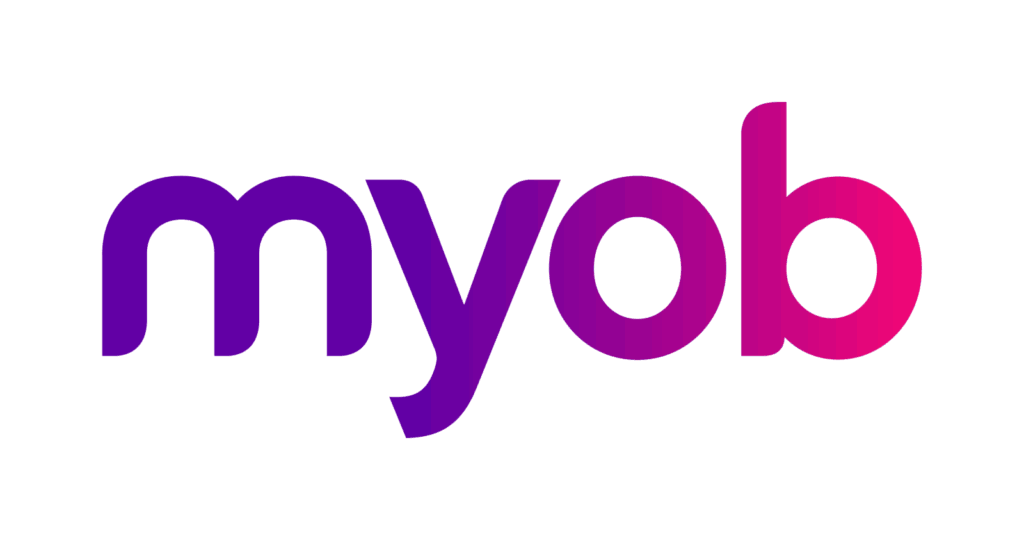Payroll management is one of those tasks that feels routine, until missed deadlines, mis-keyed tax rates, or last-minute employee changes create chaos in finding accurate payroll information. For Australian accounting firms that are managing dozens (or hundreds) of payroll operations, manual or disjointed processes multiply that risk and may lead to costly mistakes.
A standardised payroll checklist makes calculating wages easier and turns the moving parts of the payroll activities into a repeatable workflow for all pay dates. Everyone knows what happens next in the payroll system, reducing errors and ensuring nothing is left to memory, and ensuring compliance for payroll security and tax regulations to remain intact even when staff rotate or workloads spike.
Below is a step‑by‑step payroll checklist to help in processing employee wages, with practical tips for automation.
Payroll Checklist to Make Each Pay Period Easier
Think of payroll as a six‑stop journey that repeats every pay period. Each stop asks a specific question that you can tick off your payroll checklist. Answer it, and you move on to the next part confidently. Use the detailed checklist below each step as your process checklist template.
Pre-Processing: Collect and Verify Employee Information
Before you cut the first check, ask:
“Do we have the right employee data for every person being paid?”

- Gather new‑hire forms (Tax File Number Declaration, Superannuation Standard Choice Form), direct‑deposit details, benefit elections, and any court‑ordered withholdings.
- Confirm that employee records are complete and legible as per their onboarding documents.
- Validate tax forms, including Tax File Numbers (TFNs) against ATO records.
- Update pay rates and classifications (exempt/non‑exempt, contractor vs. employee).
Tip:

Store source documents in your document‑management system and link them to the employee record in your payroll platform. That way, collecting employee data and tax forms become easier, without needing to hunt through email.
Step 1: Track Time and Attendance for Payroll Processing
Even a salary‑only workforce generates leave balances and overtime calculations. Ask:
“Is the payroll information and time data accurate and approved?”

- Pull time entries from integrated apps, including recurring schedule of pay, biometric clocks, or spreadsheets.
- Ensure payroll accuracy is processed accurately, for employee satisfaction. Reconcile PTO requests, sick leave, and holiday schedules.
- Flag variances beyond policy thresholds for the manager to sign off in a timely manner.
Tip:

Transitioning to automation? Choose payroll software tools that push approved hours straight into payroll, with no re‑keying required.
Step 2: Calculate Gross Pay, Deductions, and Taxes
With verified hours, it’s math time for your payroll data. The guiding question:
“Have we applied every deduction and tax correctly?”

- Compute your employee’s income via regular, overtime, double‑time, and supplemental wages.
- Apply voluntary deductions, like private health insurance premiums, or other pre-tax deductions agreed with employees.
- Apply involuntary deductions like superannuation guarantee contributions, wage garnishments, levies, and child support.
- Calculate employer and employee taxes like the Pay As You Go (PAYG) withholding, Superannuation Guarantee contributions, Payroll Tax (state-based), and WorkCover premiums (state-based), including those for contract or hourly employees.
- Ensure the latest income tax and state payroll taxes are loaded to avoid incorrect calculations on employee wages.
Tip:

A good payroll format groups these numbers visibly to maintain accurate records: gross pay → pre‑tax deductions → taxable wages → tax withholdings → net pay. Outsourcing accountants also provide specialised expertise in navigating complex tax regulations, so you get accurate calculations, thereby reducing errors.
Step 3: Approve and Disburse Payroll
This is where errors become dollars. Ask:
“Has someone independent of preparation reviewed the pay run?”

- Generate a pre‑processing register; assign tasks, then route it for partner/manager approval.
- Lock the pay period to prevent alterations to payroll data.
- Fund direct‑deposit two banking days before payday (ACH lead time).
- Print physical checks or pay cards where required.
Tip:

Include a sign‑off step in your workflow checklist to satisfy internal‑control standards and reduce fraud risk.
Step 4: File and Report to Tax Authorities
Maintain compliance because tax laws and payroll activities don’t stop at pay day. Ask:
“Have we met all filing and deposit deadlines?”

- Deposit taxes via ATO online services (e.g., ATO Business Portal, STP reporting)
- Submit state payroll tax and PAYG withholding deposits
- E‑file quarterly BAS statements and Single Touch Payroll (STP) reports.
- Report new hires through Single Touch Payroll (STP) or other state-based requirements within the required days.
Tip:

Use a processing checklist that pairs each liability with its due date and the responsible staff member. Outsource accounting talents who are well-versed in Australian tax forms and tax filing requirements, and have the ability to proactively manage deadlines to help your firm avoid penalties.
Post-Processing: Maintain Records for Audits and Year‑End
Finally, ask:
“Can we prove what we did, and quickly?”

- Archive pay registers, tax filings, and bank confirmations for at least five years to the ATO, or longer if state rules dictate
- Identify discrepancies in payroll processing, review tax rates, and reconcile payroll liability accounts monthly.
- At year‑end, reconcile gross wages and PAYG withholding to STP finalisation, distribute Income Statements, and prepare the year end payroll checklist.
Tip:

Set calendar reminders for the July 14 (STP finalisation) and July 31 (payment summaries) reporting crunch to ensure compliance and avoid penalties in payroll processing.
Your Payroll Checklist Template
The checklist below provides a structured approach to an accurate and compliant payroll processing for calculating wages during each pay period:
Data Prepared & Verified
- All employee time entries collected and hours approved.
- Any changes to employee pay rates, independent contractors, deductions, or new hires/terminations input.
- All employee information verified as current and accurate.
Outsourced Payroll
- All client-provided data (hours, changes) received and verified.
Payroll Calculated
- Gross wages computed.
- All voluntary deductions applied.
- All involuntary deductions applied.
Payroll Reviewed & Approved
- Preliminary payroll report (pre-processing registered) generated.
- Payroll report thoroughly reviewed for accuracy (especially net pay, high/low variances).
- Final approval obtained from authorised personnel.
- Payroll period locked in the system.
Payments Disbursed
- Direct deposit funding initiated.
- Physical checks printed and prepared (if applicable).
Filing & Records Completed
- All required federal, state, and local tax deposits made by their due dates.
- Any new-hire reports submitted.
- Final payroll register and supporting documents archived.
Outsourced Payroll
- Client provided with records of filings and payments.
Management Tools That Help Streamline Payroll Workflow
When diving into payroll management, it is easier if you have the right tools for automation via a payroll provider. Let’s explore some top options that help streamline payroll:

QuickBooks Payroll
Best for: Firms already using QuickBooks Online
The QuickBooks Payroll software focuses on efficient payroll management and syncs general ledger entries in real time. It allows you to create recurring payroll tasks and reminders, so you enforce a checklist-like structure.
With QuickBooks, you also schedule filings, generate reports, and automate payments, so you don’t have to worry about toggling between accounting and payroll systems.
This makes QuickBooks ideal for accountants managing multiple clients on one dashboard.

Xero Payroll
Best for:
Small to medium-sized businesses and existing Xero users
Xero Payroll seamlessly integrates with Xero’s accounting software, with a streamlined approach to payroll management. Its intuitive dashboard presents payroll tasks in a clear, sequential order, which guides users through each step from timesheet approval to payslip distribution and tax filing.
Xero automates tax calculations and Superannuation contributions to ensure compliance. It also offers a “pay run” feature that allows users to review and approve payroll batches before processing, acting as a built-in checklist for accuracy.
For businesses already familiar with Xero’s payroll software ecosystem, this integration simplifies the entire financial management process, making payroll a natural extension of their existing workflow.

MYOB Payroll
Best for: Small businesses and growing SMEs
MYOB Payroll is tailored for the specific regulatory requirements of Australia and New Zealand, providing a robust and comprehensive payroll software that supports a structured, checklist-driven approach. It allows businesses to manage employee details, leave accruals, and superannuation/KiwiSaver contributions with ease.
MYOB’s interface is designed to walk users through each payroll cycle, prompting for necessary information and offering reminders for key deadlines such, as tax payments and lodgements. It features automated calculations for PAYG withholding (Australia) or PAYE (New Zealand) and offers detailed reporting, which serves as a checklist for compliance and reconciliation. For businesses prioritising adherence to local regulations and seeking a well-established modern payroll software that facilitates a step-by-step process, MYOB is an excellent fit.
Conclusion
A well‑built payroll checklist is more than a to‑do list, employees rely on it for payroll processing. It’s an insurance policy against penalties, reruns, and dissatisfied employees.
By standardising the core steps and layering in automation, accounting firms free up capacity to advise clients on different payroll processing strategies like calculating wages, employee retention credits, cash‑flow forecasting, and benefit optimisation to avoid costly errors in the company later on.
Ready to streamline payroll and elevate your firm’s capabilities? Book a chat with us, so you can explore how partnering with our outsourcing accounting firm transforms your payroll processes, so you can focus on strategic growth.






















